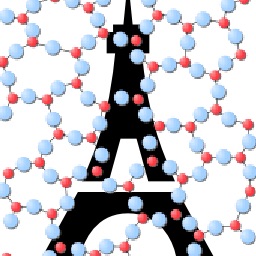Modifier clustering and avoidance principle in borosilicate glasses: A molecular dynamics study
Oxide glasses are typically described as having a random, disordered skeleton of network-forming polyhedra that are depolymerized by network-modifying cations. However, the existence of local heterogeneity or clustering within the network-forming and network-modifying species remains unclear. Here, based on molecular dynamics simulations, we investigate the atomic structure of a series of borosilicate glasses. We show that the network-modifying cations exhibit some level of clustering that depends on composition—in agreement with Greaves’ modified random network model. In addition, we demonstrate the existence of some mutual avoidance among network-forming atoms, which echoes the Loewenstein avoidance principle typically observed in aluminosilicate phases. Importantly, we demonstrate that the degree of heterogeneity in the spatial distribution of the network modifiers is controlled by the level of ordering in the interconnectivity of the network formers. Specifically, the mutual avoidance of network formers is found to decrease the propensity for modifier clustering.
